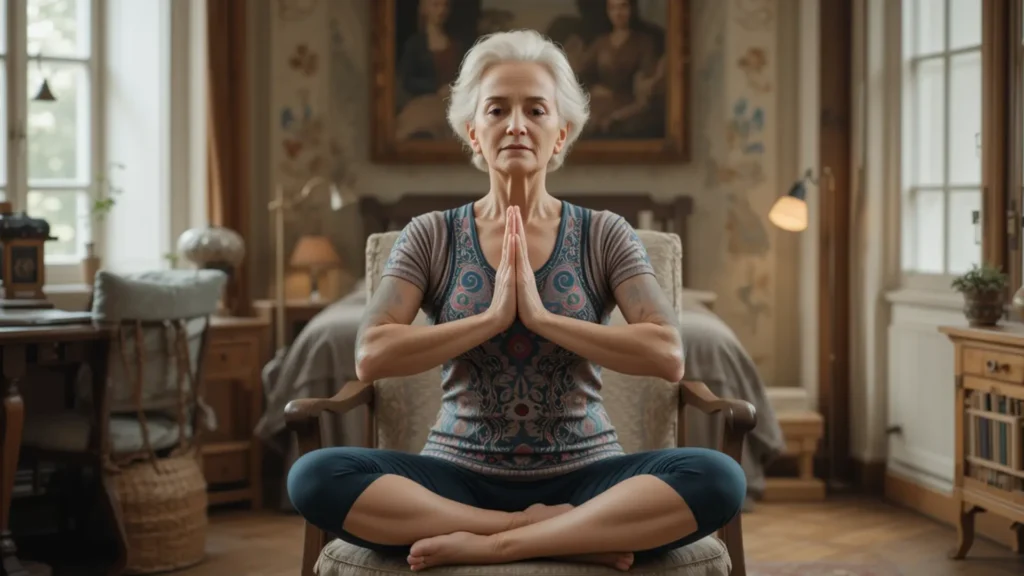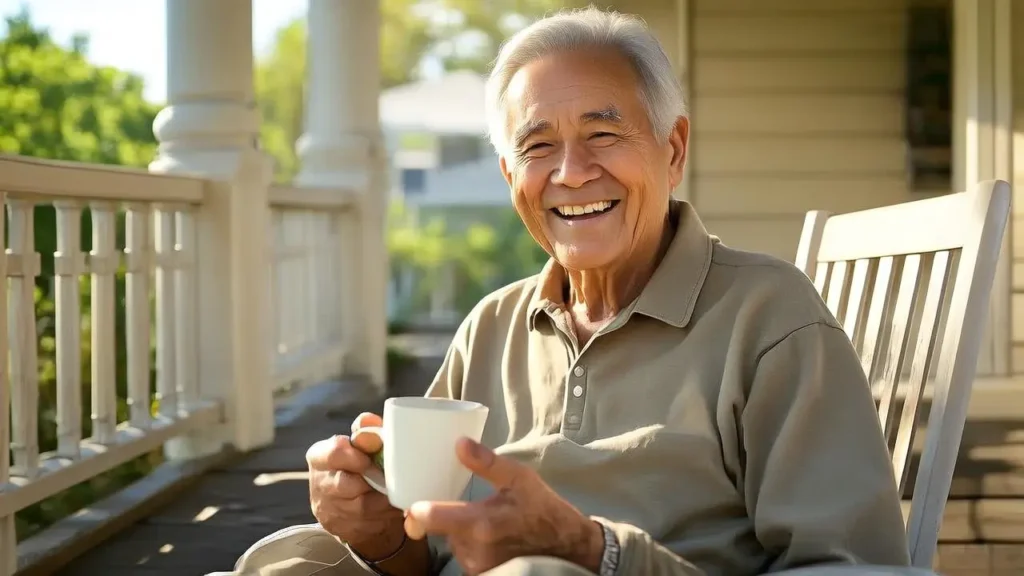Falls are a pervasive challenge for older adults. According to the Centers for Disease Control and Prevention (CDC), more than one in four adults aged 65 and older falls each year in the United States. The World Health Organization (WHO) estimates that falls are the second leading cause of unintentional injury deaths.
For older adults, a fall can mean more than just a bruise—it’s often the gateway to fractures, hospital stays, or a loss of independence. So why do older adults fall so frequently?
Below is a table that provides a global perspective on falls among older adults
Falls Among Older Adults – A Global Perspective
| Aspect | Details | Source |
|---|---|---|
| Global Prevalence | Approximately 28-35% of adults aged 65+ fall each year globally. In 2017, the age-standardized incidence was 2,238 per 100,000, with a prevalence of 5,186 per 100,000. | WHO (2021), Global Burden of Disease Study 2017 (GBD 2017), CDC (2023) |
| Annual Fatal Falls | 684,000 fatal falls occur yearly worldwide, making falls the second leading cause of unintentional injury deaths after road traffic injuries. | WHO (2021) |
| Non-Fatal Falls | 37.3 million falls severe enough to require medical attention occur annually, resulting in over 38 million DALYs (disability-adjusted life years) lost. | WHO (2021), GBD 2017 |
Why Falls Matter
Falls aren’t trivial. The CDC notes that they’re the leading cause of injury-related deaths among older adults, with over 36,000 fatalities in the U.S. in 2021 alone.
Hip fractures are a common outcome—about 300,000 older Americans fracture a hip yearly, from falls—and recovery is tough, with many never regaining full mobility.
Head injuries, like concussions or bleeds, can lead to long-term cognitive issues.
Beyond the physical toll, falls spark fear, prompting some to avoid activity altogether, which weakens them further.
Causes of Falls in Older Adults
Let’s break it down and explore this issue in depth.
Age-Related Physical Changes
Aging naturally reshapes the body in ways that make staying upright difficult. These changes creep in over time, unnoticed until a fall brings them to light.
Muscle Weakness: As we age, muscle mass dwindles. This condition is called sarcopenia. This is especially true for the legs and core, which are vital for standing, walking, and catching oneself during a stumble.
For example, climbing stairs and getting out of a chair becomes a wobbly ordeal without strong muscles to rely on.
Declining Balance: The inner ear acts like an internal gyroscope. This organ loses precision with age, throwing off equilibrioception (the sense of balance).
Add in stiffer joints and less flexible ankles, and a slight misstep—like stepping off a curb—can lead to a tumble.
Vision Impairment: Eyesight fades with conditions like cataracts, glaucoma, and weaker retinas. Older adults may miss small obstacles—like a step or a spill—that younger eyes would catch.
An older adult can fall in a dimly lit room. Sometimes he is unable to spot a pet darting underfoot when everything looks blurry or shadowy.
Slower Reflexes: The nervous system slows down over time. The split-second reaction to grab a railing or shift weight might not happen fast enough.
Picture an older adult tripping over a rug: where a younger person might instinctively lunge forward to regain balance, an older person might go down.
Chronic Health Conditions
Many older adults manage ongoing illnesses. These can quietly tip the scales toward a fall.
Neurological Disorders: Conditions like Parkinson’s disease cause tremors, while strokes weaken one side of the body. Peripheral neuropathy, often tied to diabetes, numbs the feet.
Someone might not feel a pebble in their shoe until it’s too late.
Cardiovascular Issues: Low blood pressure makes standing up feel like a rollercoaster drop. It leaves someone dizzy or faint.
Atrial fibrillation might cause sudden lightheadedness mid-step. This is dangerous on stairs.
Arthritis: Joints stiffened by arthritis, especially in the knees, hips, and ankles, turn walking into a cautious shuffle.
An older adult with arthritic hips might struggle to lift their feet high enough to clear a threshold.
Diabetes: Beyond neuropathy, fluctuating blood sugar saps energy. This makes falls more likely during a low-glucose episode.
Medication Side Effects
Medications are a double-edged sword. They are essential for health. Sometimes they increase a hidden fall risk.
Sedatives and Antidepressants: Drugs like sleeping pills or anti-anxiety meds leave someone groggy. It makes the patients feels like they’re walking through fog.
Even waking up to use the bathroom at night becomes risky.
Blood Pressure Medications: These can drop pressure too low. Low blood pressure causes dizziness when moving from sitting to standing. This scenario is common during morning.
Polypharmacy: Older adults often juggle multiple drugs. Say, one for blood pressure, another for pain, and a third for sleep.
Mixing these can amplify side effects. Common side effects are drowsiness and confusion. They turn a simple walk to the kitchen into a hazard.
Environmental Hazards
The spaces older adults live in can either support or sabotage their safety. Everyday settings are riddled with risks that younger people overlook.
Clutter: A grandchild’s toy, a trailing phone cord, or a throw rug with curled edges can trip someone up.
Poor Lighting: Dim hallways or unlit staircases hide dangers. An older adult descending basement stair at dusk might miss the last step entirely.
Uneven Surfaces: Cracked sidewalks are notorious. Even moving from carpet to tile can jolt unsteady legs. A rural older adult crossing a gravel driveway faces similar odds.
Lack of Support: No handrail on a porch staircase or grab bar by the bathtub can help to be the victim of a fall.
Lifestyle Factors
Choices made over years—or even in the moment—can stack the deck against stability.
Inactivity: Sitting too much weakens muscles and bones over time. An older adult who skips walks or exercise might find their legs buckling under them when lifting groceries.
Footwear: Flimsy slippers, worn-out sneakers, and even going barefoot indoors can betray footing. High heels practically invite a spill.
Alcohol Use: A glass of wine might relax. But too much dulls reflexes and muddies judgment. An older adult enjoying cocktails at a party might not notice the uneven patio stones until they’re on the ground.
Dehydration: Older adults feel less thirst. This can cause dizziness, especially in hot weather.
Cognitive and Psychological Factors
The mind isn’t just a bystander. It can actively contribute to falls through distraction or distress.
Dementia: Memory loss or confusion might lead someone to forget where steps are. An older adult might confidently stride toward a glass door they don’t realize is closed.
Fear of Falling: After one fall, anxiety takes root. This fear might make someone walk stiffly.
Distraction: Chatting on the phone, watching TV while moving, and daydreaming pull focus from footing.
Prevention: A Proactive Approach
Armed with insight, older adults and their families can fight back against falls with practical steps:
Exercise: Activities like yoga, tai chi rebuilds muscle and balance.
Home Safety: Clear pathways of clutter, add nightlights, secure rugs with tape, and install handrails. Sometimes small fixes come with big payoffs. A bathroom grab bar, for instance, can turn a slippery exit from the shower into a safe one.
Regular Checkups: Annual eye exams, hearing tests, and talks with doctors about medications can catch problems early. Swapping out a dizzying pill for a safer alternative might be all it takes.
Assistive Devices: A cane, walker, and a walking stick can steady the stride. Modern designs with these tools can boost confidence in older adults.
Footwear Upgrades: Switching to supportive, non-slip shoes—with Velcro for arthritic hands—keeps feet grounded.
By understanding why older adults fall and taking action, we can rewrite the narrative. Aging brings challenges, but with awareness and effort, falling doesn’t have to be one of them.




